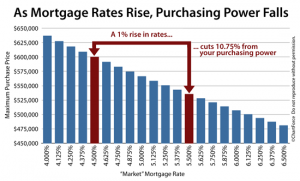The financial crisis that began in 2008 affected most Americans in some big fashion or another. Whether it was the loss of a job, home, savings and/or retirement fund, or mounting student debt loans with no job prospects for new graduates, Americans are slowly regaining the financial foothold they lost.
The economy has shown traction in job creation. Unemployment claims have dropped to near 6 year lows and the housing market appears to be thriving; U.S. existing home sales, released this week, jumped to their highest level in over 3 years to 6.5% in July. The slight bump in mortgage rates does not seem to be deterring homebuyers just yet as rates are still historically very low.
But some have not been able to take advantage of this opportunity of low rates. Several  Americans are still dealing with the effects from the massive foreclosures that ensued. As they work to rebuild their credit and finances, and once again attempt to lay claim to the American Dream of home ownership, a new change in the FHA loan rules should help make this easier to accomplish.
Americans are still dealing with the effects from the massive foreclosures that ensued. As they work to rebuild their credit and finances, and once again attempt to lay claim to the American Dream of home ownership, a new change in the FHA loan rules should help make this easier to accomplish.
The Federal Housing Administration (FHA) has amended the waiting period for borrowers who foreclosed on their home and are seeking to qualify for an FHA loan. Originally, the wait time to qualify was 3 years after a foreclosure and 2 years after the conclusion of a bankruptcy. Now, borrowers who sought bankruptcy, foreclosure, short sale, or deed-in-lieu can hope to qualify for an FHA loan in as little as 12 months if they meet certain requirements.
Borrowers will have to show proof that household income fell at least 20% for the last 6 months and that this drop was attributed to unemployment or some other event out of the borrower’s control. Also required, proof of 12 months of house payments made on time, documentation showing at least 1 hour of approved home counseling completed and evidence the borrower has fully recovered from the event. This new change for FHA loans are applicable to case numbers assigned on or after August 15, 2013 and will be effective till September 30, 2016.
Upon announcement of these changes, Commissioner of the FHA, Carol Galante, stated that the “FHA recognizes the hardships faced by these borrowers, and realizes that their credit histories may not fully reflect their true ability or propensity to repay a mortgage.”
This may be the break that some borrowers were hoping to catch. It will be interesting to see how much this contributes to new and existing home sales over the coming months, if at all.
For information on effective ways to manage institutional and individual portfolios nationwide, or to shop for real estate visit First Preston HT. Like us on Facebook. Follow us on Twitter.







 These five checkpoints can help first-time buyers to strike the right housing match.
These five checkpoints can help first-time buyers to strike the right housing match. 